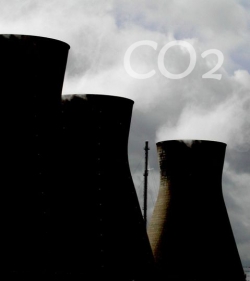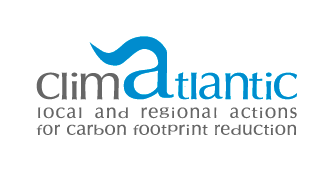NEWS & EVENTS : GENERAL INFORMATION

Emissions trading: 2013 data show lower emissions but surplus of allowances persists
05.16.2014
Emissions of greenhouse gases from installations participating in the EU Emissions Trading System (EU ETS) are estimated to have decreased by at least 3% last year, according to the information recorded in the Union Registry.
climatlantic //
Climate Action Commissioner Connie Hedegaard said: "The good news is that emissions declined faster than in previous years even as Europe’s economies started to recover from the recession. However, there is still a growing surplus of emission allowances that risks undermining the orderly functioning of the carbon market. The Commission has taken action to address this with the already adopted back-loading measure. But as this is only a temporary measure, the Commission has proposed to establish a market stability reserve. Now it is up to the European Parliament and the Council to take it forward and move ahead swiftly in their discussions. "
2013 emissions decline
The EU ETS covers more than 12 000 power plants and manufacturing installations in the 28 EU member states, Iceland, Norway and Liechtenstein, as well as emissions from airlines flying between European airports. Last year marked the start of the third ETS trading period (phase 3), which runs until 2020.
Verified emissions of greenhouse gases from stationary installations amounted to 1895 million tonnes of CO2-equivalent in 2013. Although there are some methodological challenges in assessing with certainty the change in emissions compared to 2012 due to the extension in scope of the EU ETS for the third trading period, estimated emissions in 2013 on a like-for-like basis were at least 3% below the 2012 level for installations in sectors included in both the second and third trading period. Emissions additionally covered by the EU ETS due to the extension of its scope are estimated at 79 to 100 million tonnes.
Allowance surplus growing again
The cumulative surplus in emission allowances increased further to more than 2.1 billion for the 2013 compliance year from almost two billion at the end of 2012. The 2013 figure takes into account the exchange of international credits into allowances, sales of phase 3 allowances to generate funds for the NER300 programme to support innovative low-carbon technologies, allowances allocated for 2013 and auctioning of phase 3 allowances in 2013. It is expected that in 2014 the surplus will start to shrink as the implementation of back-loading has started in the first quarter of 2014.
High level of compliance
Companies' level of compliance with the EU ETS rules was again high. Less than 1% of the installations which have reported emissions for 2013 did not surrender allowances covering all their emissions by the deadline of 30 April 2014. These installations are typically small and together account for less than 1% of emissions covered by the EU ETS. For this first reporting year of the third trading period, about 3% of stationary installations subject to compliance obligations in 2013 did not report their emissions by 30 April 2014, according to registry data.
Exchanges of international credits
Since 2013, credits gained from investment in emission-reduction projects undertaken in third countries can no longer be directly surrendered for ETS compliance but must be exchanged into allowances.
Of the 132.8 million credits that were exchanged for allowances by 30 April 2014, 50% were Certified Emission Reductions (CERs)1 and 50% Emission Reduction Units (ERUs).2 The origin of these CERs and ERUs was from a limited number of countries, with 80% of CERs originating from China and nearly 5% from India, and 70% of ERUs from Ukraine and 25% from Russia.
Reporting and compliance for 2013 aviation emissions to take place by 2015
The 2013 data do not cover aviation emissions since aircraft operators are not required to report 2013 emissions for flights within the European Economic Area until 31 March 2015, or surrender the corresponding volume of allowances until 30 April 2015. The deadlines have been extended under a recent amendment of the EU ETS Directive which takes account of the intended implementation by 2020 of an international agreement applying a single global market-based measure to aviation emissions.
Background
Under the EU ETS, installations are required to submit their verified emissions data for each year to Member State registries. For 2013, this data became publicly available on the European Union Transaction Log (EUTL) on 2 April 2014. From 15 May, the EUTL also displays compliance data, with information on whether installations have complied with their obligation to surrender an amount of allowances equal to last year's verified emissions.
The third trading period of the EU ETS began on 1 January 2013 and runs for eight years until 31 December 2020. The legislation reforming the EU ETS, laying down revised rules until 2020 and beyond, was adopted as part of the EU climate and energy package on 23 April 2009.
In January 2014 the Commission proposed legislation to establish a market stability reserve at the beginning of the next ETS trading period in 2021. The reserve would both address the surplus of emission allowances that has built up and improve the system's resilience to major shocks by adjusting the supply of allowances to be auctioned.
For more information:
EU Transaction Log homepage: http://ec.europa.eu/environment/ets/








